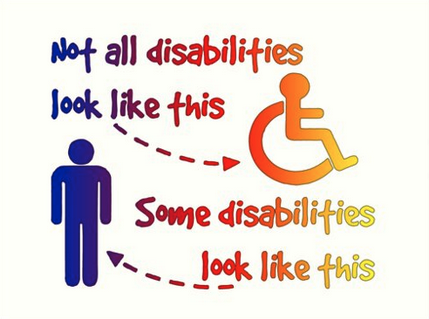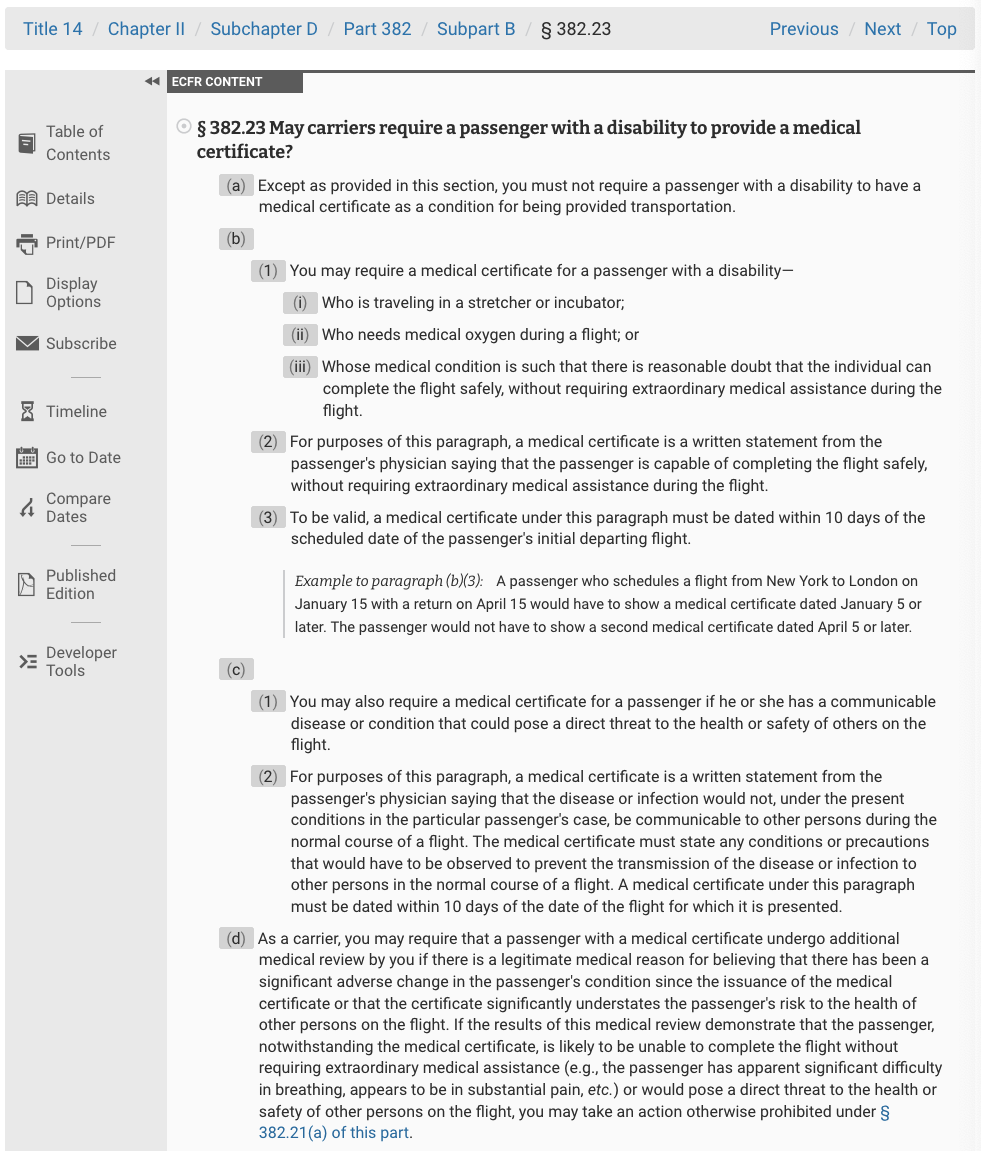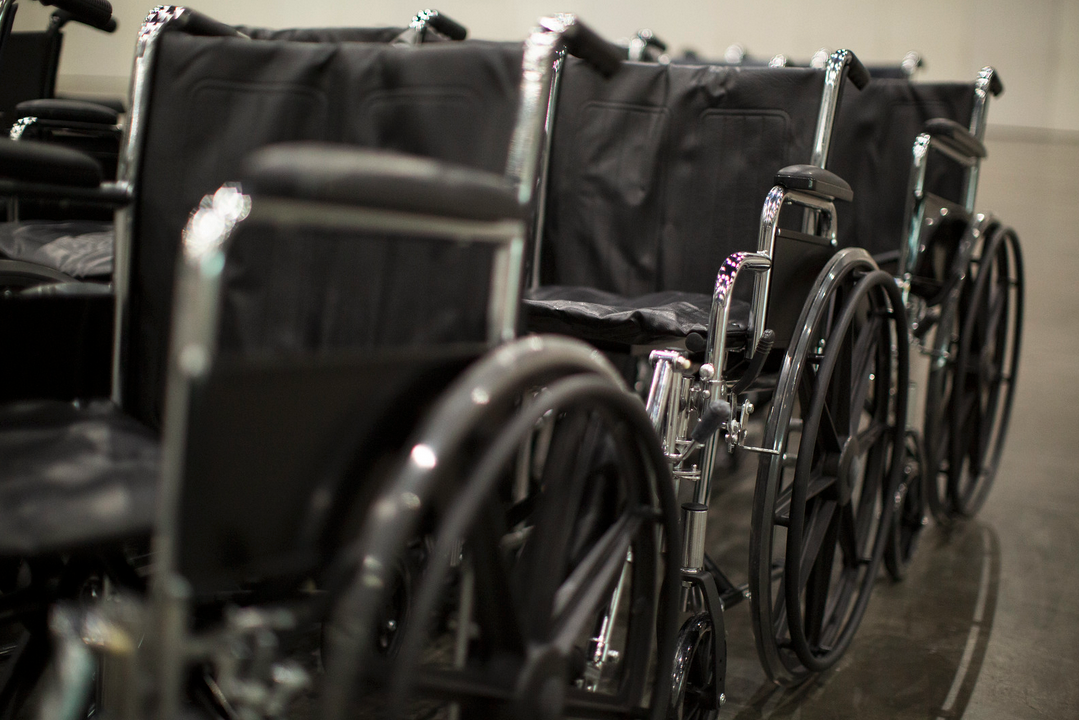We wrote a couple of weeks ago that Southwest Airlines is now looking at how they offer seating and boarding, and seeing if and how any changes could be made.
Their ultimate decision about this might be more financial than anything – being able to charge for seat assignments can be extremely lucrative (just ask nearly every other airline out there). But IF they switch to a “pay to choose your seat” model, you can’t tell me that maybe a small part of that decision will be because of ongoing complaints about the vast increase in the number of people who identify as “preboarders.”
Southwest’s preboarding policy
Southwest’ preboarding policy has changed very little since at least 2017:
Preboarding is available prior to general boarding for Customers with disabilities who need a specific seat to accommodate a disability, need assistance boarding the aircraft, or need to stow an assistive device.
A Customer Service Agent at the ticket or departure gate counter can help with this accommodation, and you’ll be asked questions to determine if you qualify. You’ll receive a new boarding pass marked with PRBD if you qualify, which lets the Operations Agent at boarding know that you can preboard. Remember that you can’t occupy an exit seat if you preboard.
One travel companion may preboard with you. If you feel you need an exception to this, please discuss your needs with a Customer Service Agent at the gate when requesting preboarding.
If you’re preboarding because you need a specific seat, speak with the Operations Agent after getting your new boarding pass but before preboarding starts.
Customers with disabilities who simply need a little extra time to board or be seated or otherwise do not qualify for preboarding may board between the “A” and “B” groups, before Family Boarding. A Customer Service Agent at the ticket counter or departure gate can give you a new boarding pass marked with XT, which lets the Operations Agent at boarding know that you can board before Family Boarding.
If you read the whole thing, you’ll see that, technically, preboarding is only supposed to be for, “…customers with disabilities who need a specific seat to accommodate a disability, need assistance boarding the aircraft, or need to stow an assistive device.”
Furthermore, “customers with disabilities who simply need a little extra time to board or be seated or otherwise do not qualify for preboarding may board between the “A” and “B” groups…”
But really, can anyone remember the last time a gate agent reinforced that? I can’t. Instead, it’s 10, 20, or even 30 people, mainly in airport wheelchairs, waiting to preboard. It was usually only a handful of people a couple of years ago. But then influencers started posting about the so-called “hack” of how to board Southwest planes earlier (and then save seats for their party of 6 because there’s no official policy for saving seats, either). And people started saying, “I want a piece of that!”
Some disabilities are invisible but…
 And let me add here that yes, I know many disabilities are not always visible, and some of the people preboarding do really need a specific seat to accommodate a disability, need assistance boarding the aircraft or need to stow an assistive device. I was an occupational therapist for 20-something years; it was my career choice to work in home health and help those kinds of people be more independent in their daily lives.
And let me add here that yes, I know many disabilities are not always visible, and some of the people preboarding do really need a specific seat to accommodate a disability, need assistance boarding the aircraft or need to stow an assistive device. I was an occupational therapist for 20-something years; it was my career choice to work in home health and help those kinds of people be more independent in their daily lives.
However during my career, I also saw adult children borrow their parents’ “disabled driver” placards while they went food shopping, while the parent stayed home. I was asked by patients to alter what I saw them do in therapy vs. what I documented, so they could get therapy for longer. I saw so-called “homebound” patients being driven (or occasionally independently driving) to Blockbuster Video and Borders Book Shop, and bumped into one patient at an Outback Steakhouse. (All of that’s totally opposite of the definition of being homebound. Someone who drives or can be driven to retail stores and restaurants can be driven to outpatient therapy, which costs insurance companies a whole lot less than someone going to their home to give them therapy).
So yes, there’s no question that some people are 100% legit. However there are also some who are undoubtedly gaming the system.
Why can’t Southwest ask for proof?
This all leads us to a question I’ve seen time and time again: why can’t Southwest just ask for proof of a disability that shows a passenger needs to preboard?
Simply put, it’s illegal to do that.
ACAA, DOT and CFR
The Air Carrier Access Act (ACAA) became a law during the Reagan administration in 1986. ACAA makes it illegal for airlines to discriminate against passengers because of their disability. The U.S. Department of Transportation (DOT) enforces the ACAA, which applies to all flights to, from, or within the United States.
The DOT has published a Bill of Rights for passengers who have disabilities. This Bill of Rights describes the fundamental rights of air travelers with disabilities under the Air Carrier Access Act and its implementing regulation, 14 Code of Federal Regulations (CFR) Part 382. They include:
1. The Right to Be Treated with Dignity and Respect.
2. The Right to Receive Information About Servicws and Aircraft Capabilities and Limitations.
3. The Right to Receive Information in an Accessible Format.
4. The Right to Accessible Airport Facilities.
5. The Right to Receive Prompt and Adequate Wheelchair, Guide, and Other Assistance at Airports and on Aircraft.
6. The Right to Assistance on the Airports (including the Right to Preboard).
7. The Right to Travel with an Assistive Device or Service Animal.
8. The Right to Receive Seating Accommodations.
9. The Right to Accessible Aircraft Features.
10. The Right to Resolution of a Disability-Related Issue.
But it’s that code of federal regulations that spells it out:

TL/DR – what does that all mean?
§ 382.23 means the only time an airline can require any sort of medical certificate is if the passenger is traveling in a stretcher or incubator, needs medical oxygen during the flight, has a medical condition where there’s doubt the passenger could complete the flight without extraordinary medical assistance, or if they have a communicable disease or condition that could pose a direct threat to the health or safety of others on the plane.
Except for those instances, airlines simply aren’t allowed, by law, to ask for medical documentation or any other sort of proof of a disability.
So there’s nothing Southwest can do to stop 30 people from preboarding?
Nope.
Well, except for implementing some form of assigned seating. And even then, people who say they have certain disabilities could still board first. But if they’re assigned seat 19E, that’s the seat they’ll go to, whether they board first, last, or somewhere in between.
Want to comment on this post? Great! Read this first to help ensure it gets approved.
Want to sponsor a post, write something for Your Mileage May Vary, or put ads on our site? Click here for more info.
Like this post? Please share it! We have plenty more just like it and would love it if you decided to hang around and sign up to get emailed notifications of when we post.
Whether you’ve read our articles before or this is the first time you’re stopping by, we’re really glad you’re here and hope you come back to visit again!
This post first appeared on Your Mileage May Vary


10 comments
Preboards should be required to sit in the back. Need extra time to board, then you need extra time to deplane, right? This keeps them from slowing down the deplane process and being overrun by others, right? .
Bet the number of preboards instantly drops 90%.
Maybe you didn’t read the entire post? Preboards are specifically for people who need a certain seat. For example, they have a leg brace, or a knee fusion and can’t bend their leg at the knee, so they need the bulkhead, to have more room to accommodate. Or maybe they’re paralyzed but can transfer, by themselves, from their wheelchair to a front seat (as opposed to requiring a wheeled aisle chair), thereby giving them as much independence as possible. But yes, your idea would be great if you want the airline to be punitive.
Sharon you need to take a WN flight to Florida so you can witness the Miracle Flights. 20+ preboarders needing wheelchairs then suddenly walk off on their own upon landing.
Mick, I removed your last sentence where you called preboarders bad names. That’s not necessary and goes against our rules for approving comments.
Anyway, as I suggested to Scott, I question if you read the piece. Did you not see my entire paragraph about understanding how some preboarders are 100% legit but many may very well be gaming the system?
“Many may very well be gaming the system..” I bet it is close to 98%.
Mick is correct. There are 30+ people in wheelchairs leaving ISP and almost none when you land in Florida. It’s gross. Southwest had the ability to prevent this from happening when they saw what was going on. Anyone who flies to Florida on a non-stop flight has seen it for year.
All they needed to do was make it mandatory to deplane the same way you boarded.
Why is it a boarding only even an option? That’s not how it works on other airlines. If you needed it to get on then you need it to get off. Sit and wait for the wheelchair like an actual wheelchair user.
My mother has Parkinson’s and cannot walk at all. She can barely transfer because she has no strength to stand. She pre-boards and then we wait for the wheelchair to take her off. We appreciate that she has the ability to travel made possible by the use of a wheelchair and wheelchair services.
Anyone that used a wheelchair to get on should have to wait for one to get off. Period. That is not punitive at all.
Everybody knows the system is being completely abused. Wait until Southwest gets sued by someone who actually needed a wheelchair to get on the plane and there weren’t any to be found because they were being (ab)used by people who are trying to cut the line.
Or let’s just get that instagram “Pickpocket” lady to come over from Italy and take a couple Southwest flights. She can follow them around with her phone when they get off the plane yelling “è un miracolo!”
I wrote about the pickpocket ladies a few months ago. You made me laugh with that last line 😉
You “saw so-called “homebound” patients being driven (or occasionally independently driving) to Blockbuster Video and Borders Book Shop”? When? 20 years ago?
But I digress. So what if 20 people need to pre-board? You won’t be late to where you are going if you’re in row 8 instead of row 2.
Some of them were more than 20 years ago, actually (others were only about 12+/- years ago. I worked in healthcare for a long time). But FWIW (and we’re going way off topic) the same abuse still happens nowadays when someone gets home health care.
As a former CRO for an airline (and used to teach CRO which is primarily Part 382 and ACAA)… thanks for covering this.
Every airline is required to make accommodations for specific types of seat assignments for medical reasons… as long as it is within the same class of service as paid (basically you can’t get something for free other than a basic seat assignment that meets your medical needs – which the airline gets to determine which seat based on what you tell them… in advance of the flight). Southwest has to offer such wide pre-boarding solely because it does not have pre-assigned seats, thus someone who needs a specific type of seat can’t reserve in advance so has to be given first crack at getting it before someone else does.
I once was in a meeting with the Open Doors Organization and their own statistic was that 80% of people who use a wheelchair in the airport do not require or regularly use one in their daily life. There can be legit reasons for this… long distances to travel, lengthy times to stand… and sometimes reasons why a wheelchair is needed on one end of the flight versus another (flying into Gainesville is different than MCO).
Southwest has just basically thrown in the towel unfortunately. There are things they could do, such as blocking certain seats and pre-assigning to those who notify of a need in advance. But, their IT system until only the last few years was so antiquated it could barely even collect cash payments (much of why they haven’t charged for bags is because they couldn’t!).
Thank-you for that input. Very interesting. And sad, on SW’s part. It’s time for them to hit the 21st century.